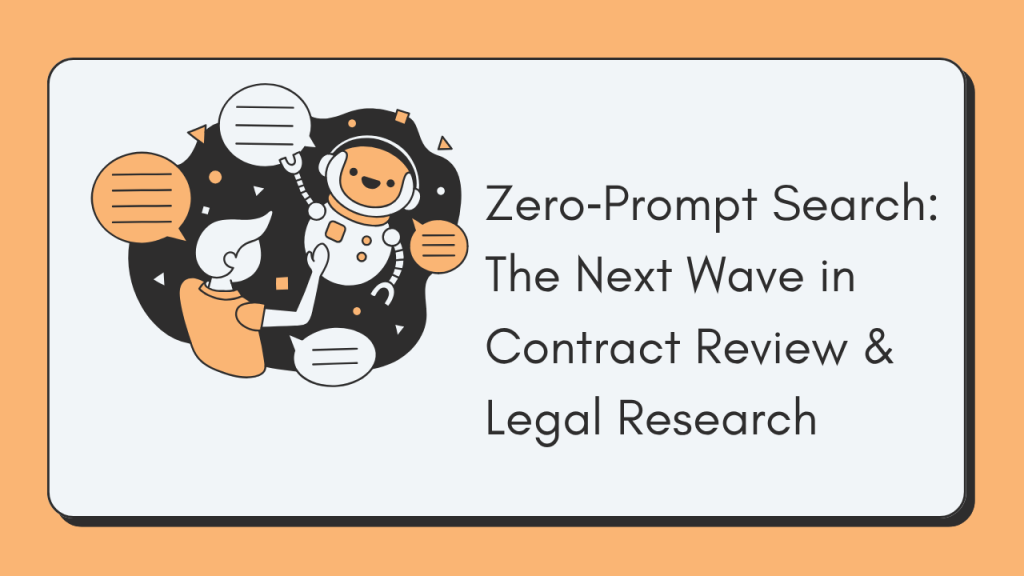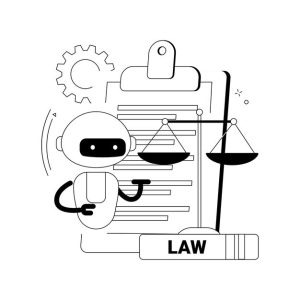Technology is changing the legal world faster than ever. One of the newest and most exciting changes is Zero‑Prompt Search. It is a smart way to find information without writing long search queries. This feature is becoming very important for contract review and legal research. In this blog, we will explain what Zero‑Prompt Search is, why it matters, and how it can help law firms and legal teams work better.
What is Zero‑Prompt Search?
The way a traditional search engine works is: You enter the keywords or the question in the search box and the system provides you results. However, what will happen when you are not sure of the correct keywords? Or perhaps you do not know what to ask?
This is where Zero‑Prompt Search comes in. With Zero‑Prompt Search, you do not need to type a question. The system already understands the context and gives you the right information automatically. It uses AI and machine learning to understand what you are working on and what you might need next.
Think of it like this: Instead of asking, “What is the limitation of liability clause in this contract?” the system finds it for you without asking. It predicts your needs and brings answers to you.
How Does Zero‑Prompt Search Work?
Zero‑Prompt Search uses context awareness. It looks at:
- The document you are reading
- The type of task you are doing
- Previous actions and searches
Based on this, the system suggests relevant clauses, definitions, case laws, or explanations without waiting for your input. This is possible because of advanced AI models trained on legal language and data.
For example:
If you are reviewing a contract and reading a confidentiality clause, the tool can show you:
- Related confidentiality rules
- Similar clauses from past contracts
- Risk alerts or missing terms
If you are doing legal research, it can suggest:
- Relevant case laws
- Statutory references
- Summaries of judgments
You save time because the tool does the thinking for you.
Why is Zero‑Prompt Search Important for Law Firms?
Lawyers spend a lot of time searching for the right information. Traditional search requires effort and accuracy in typing keywords.Otherwise, you may not see the right result when you miss the right keyword. This is time and energy wasting.
Zero‑Prompt Search solves this problem. It gives faster, smarter, and more accurate results. Here are some key benefits:
1. Time Saving
Contract review can take hours or even days. With Zero‑Prompt Search, the system highlights key points automatically. You do not need to go through hundreds of pages anymore.
2. Better Accuracy
Manual searches can miss important details. AI-powered Zero‑Prompt Search reduces human error. It gives precise and complete information.
3. Improved Productivity
Lawyers can focus on analysis and strategy instead of wasting time on finding data. This means more value for clients.
4. Client Satisfaction
Faster work means faster results for clients. They get better service at lower costs.
How is It Changing Contract Review?
Contract review is a major part of legal work. It is also one of the most time-consuming tasks. Lawyers have to:
Read every clause
- Check for missing terms
- Compare with past contracts
- Find risks and obligations
With Zero‑Prompt Search, many of these steps are automated. The system can:
- Highlight risky clauses
- Suggest standard language
- Show similar cases from the past
- Offer compliance alerts
This reduces review time and makes the process safer and more reliable.
How is It Changing Legal Research?
Legal research is another big task for lawyers. They need to:
- Search for case laws
- Read long judgments
- Check for latest updates
- Compare different legal positions
Traditional research means typing queries, reading results, and refining searches many times. Zero‑Prompt Search changes this. It reads the context of your work and offers direct answers.
For example:
- While drafting a contract, it can show you recent cases about similar clauses.
- When writing a legal opinion, it may assist with statutory provisions that are relevant.
That is not spending time searching around, that is time to analyze.
Real-World Example
Imagine a lawyer working on a merger agreement. While reading the termination clause, the AI tool automatically shows:
- Related case laws about termination in mergers
- Risk factors in the current clause
- A comparison with standard market language
The lawyer does not need to search manually. Everything appears automatically in context. This saves hours of work.
Will Zero‑Prompt Search Replace Lawyers?
The short answer is no AI is a utility not a substitute. Judgment, strategy, negotiation skills are provided by lawyers that machines cannot perform. Zero‑Prompt Search only makes the process faster and smarter. It helps lawyers focus on thinking and advising, not on routine search tasks.
How Can Law Firms Prepare?
If your law firm wants to benefit from this technology, here are a few steps:
1. Choose the Right Tool
Look for AI tools that offer Zero‑Prompt Search for contracts and research.
2. Train Your Team
Teach lawyers how to use the tool effectively.
3. Start with Simple Tasks
Begin with contract review or basic research. Then expand.
4. Measure and Control
Keep track of results and improve workflows.
The Future of Legal Work
Zero‑Prompt Search is more than a trend. It is the future of attorney work. It is time-saving, accurate, and it enhances the level of productivity in the lawyers. The further development of the sphere of AI will make the legal processes even more automated. Law firms that adopt these tools early will have a big advantage.
Final Thoughts
The legal industry is moving towards intelligent, context-based tools. Zero‑Prompt Search is leading this wave. It is not about replacing lawyers but about making them more efficient. If you want to stay ahead, now is the time to explore this technology.










